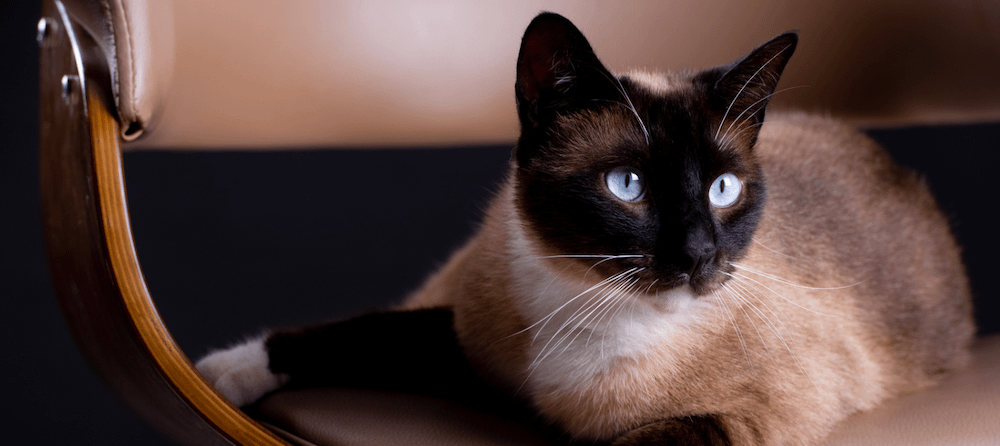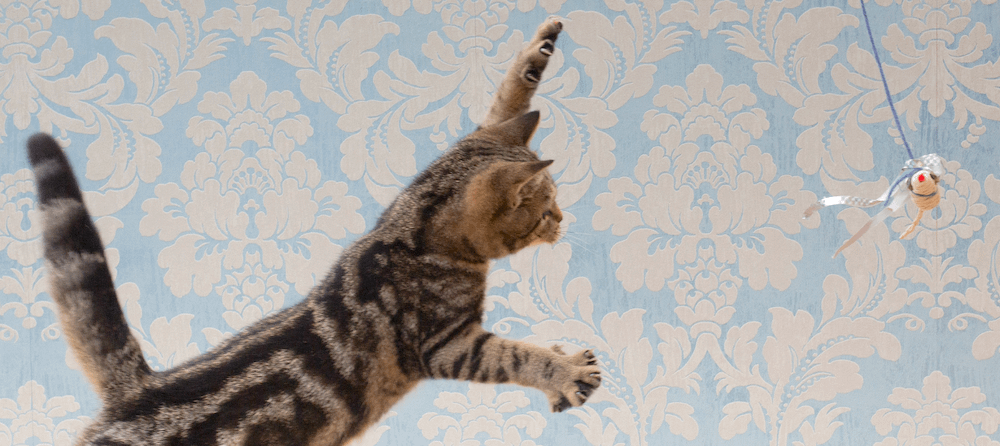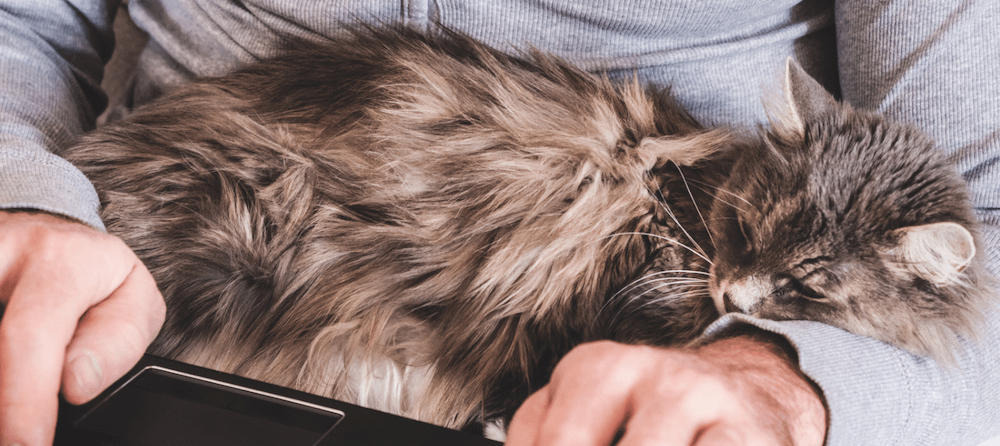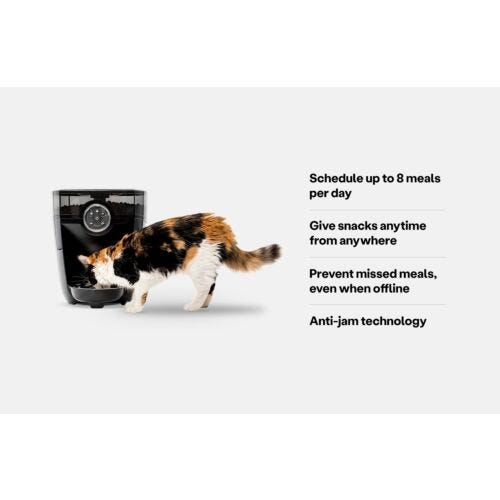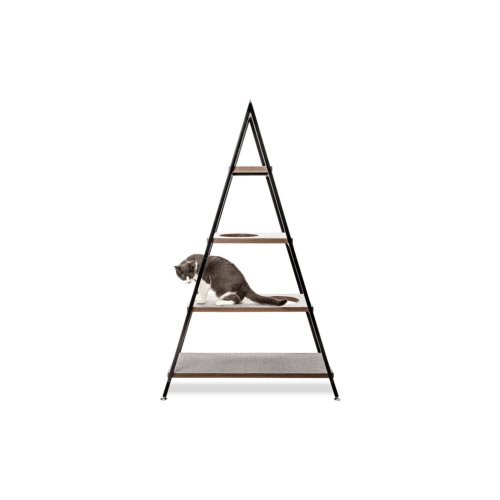With striking looks, a lovable personality, and an impressive “vocabulary,” the Siamese cat makes a bold first impression on just about anyone they meet. This breed has been incredibly popular for centuries, from ancient Siam temples to modern-day American homes.
Since Siamese cats are one of the oldest cat breeds in existence, what does that say about their expected lifespan? We’ll explore this question and whether there are inherited diseases to watch for, while learning more about their fascinating history and larger than life personality.
When it comes to how long your cat will live, there are many factors that impact their lifespan, including nutrition, exercise needs, genetic conditions, and proper grooming. Taking the best care of your pet can help ensure they live a long and healthy life.
You should be prepared to meet the many needs of a Siamese cat before you adopt one. Learning about their care requirements can prolong their time spent as your feline family member.
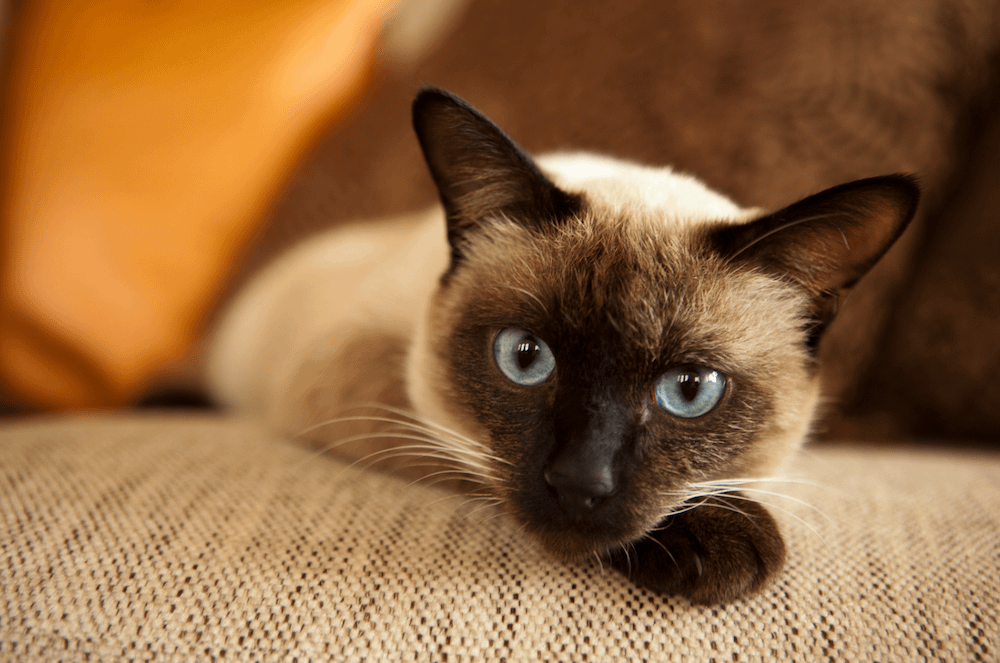
The lifespan of a Siamese cat
A Siamese cat that is in good health and indoor-only can typically live for 10 to 15 years, which falls in line with the expected lifespan of the average domestic house cat. Siamese cats that live outdoors (even part of the time) tend to have shorter lifespans. This is because outdoor cats face more exposure to trauma, predators, and disease.
Siamese cats are very energetic and lively. This is great for daily exercise, but most Siamese cats want their humans to entertain them and be involved in their playtime. This can pose a challenge for some cat parents, as they may not have as much time to be involved in their pet’s life as the average Siamese demands.
Siamese cats can quickly become bored if you aren’t fulfilling all their needs—potentially leading to mischief, over-the-top vocalizing, or even depression caused by loneliness.
Like many other breeds, there are medical conditions that could impact a Siamese cat’s health, so it’s essential to take your cat to the vet regularly.

What is a Siamese cat?
For many cat fans, the Siamese is a quintessential short-haired cat breed. Their distinct colorpoint coat, vivid blue eyes, and haughty expression is as much a part of popular culture as it is a part of ancient history.
While no one can deny their stunning appearance and storied past, it’s the Siamese cat’s exuberant personality that really deserves the spotlight.
History
The Siamese cat originated centuries ago in Siam (modern-day Thailand). They were first depicted in a 14-century book of cat poems written by Siamese monks, likely functioning as temple cats. This breed was highly regarded by more than just the religious community—they have been a favorite among Thai royalty for centuries, even taking part in the coronation of King Prajadhipok in 1926.
The Siamese made its way to Europe in 1884 after the English consul-general, Edward Gould, obtained a breeding pair from Bangkok. Breeders in Europe became fascinated with this cat and saw their potential. Through selective breeding, Siamese cats slimmed down and developed wedge-shaped heads.
The first Siamese cat to enter the United States was a gift to President Rutherford B. Hayes and the First Lady in 1878. After moving into the White House, Siamese cats became very popular in the U.S.
Characteristics
Traditional Siamese cats were big-boned with a round face. Today’s modern Siamese is more elongated, willowy, and thin, making their blue eyes and large ears stand out. All Siamese cats have a short, sleek, and pointed coat, but they can display different color variations. The Cat Fanciers’ Association recognizes the four original Siamese colors—blue point, lilac point, chocolate point, and seal point—for cat show contestants, but this breed can develop many other shades.
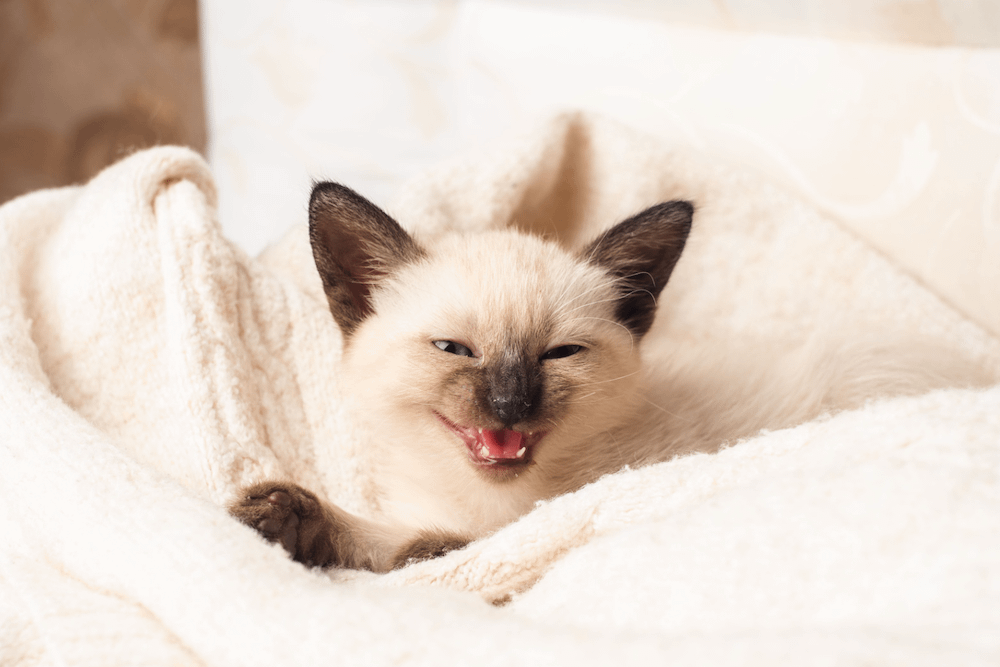
Personality
Siamese cats are extremely loving, entertaining, and vocal. This breed has a loud, low-pitched voice that could be compared to the cries of a human baby. They are quick to befriend anyone who walks in the door, chatting them up as if they were already the best of pals.
You’ll be amazed at how long your Siamese can carry on a conversation with you. They will follow you from room to room, trying to convince you of their opinion on the matter. What matter in particular? Anything that’s distracting you from interacting with your Siamese!
As you may have guessed, these cats thrive on attention. If you’re not home often or don’t have another pet, your Siamese might struggle. It’s best to give this social butterfly a playmate, whether the four-legged kind or an energetic child—but be sure kids in the household know how to respectfully interact with cats before leaving them alone together.
Potential health-related concerns
There are certain medical conditions for which your Siamese cat might be more at risk, so knowing what to look out for can help improve how rapidly the issue is diagnosed and treated.
Siamese cats are prone to vision problems. Although the breed used to be born cross-eyed, this trait has mostly been bred out over a long period of time. Still, Siamese cats are predisposed to glaucoma and progressive retinal atrophy, a degeneration of retinal tissue that can lead to blindness. Early signs of glaucoma include dilated pupils, a bluish cloudy appearance of cornea, eye pain, and a physical bulging of the eyeball, while an early sign of progressive retinal atrophy is night blindness.
The Siamese cat is also predisposed to amyloidosis, an inherited disease that can lead to kidney issues. And due to their wedge-shaped heads, Siamese cats may be more at risk of developing respiratory disease.
Harmless but still worth mentioning is a prevalence of kinked tails in Siamese cats, the result of an inbreeding genetic trait.
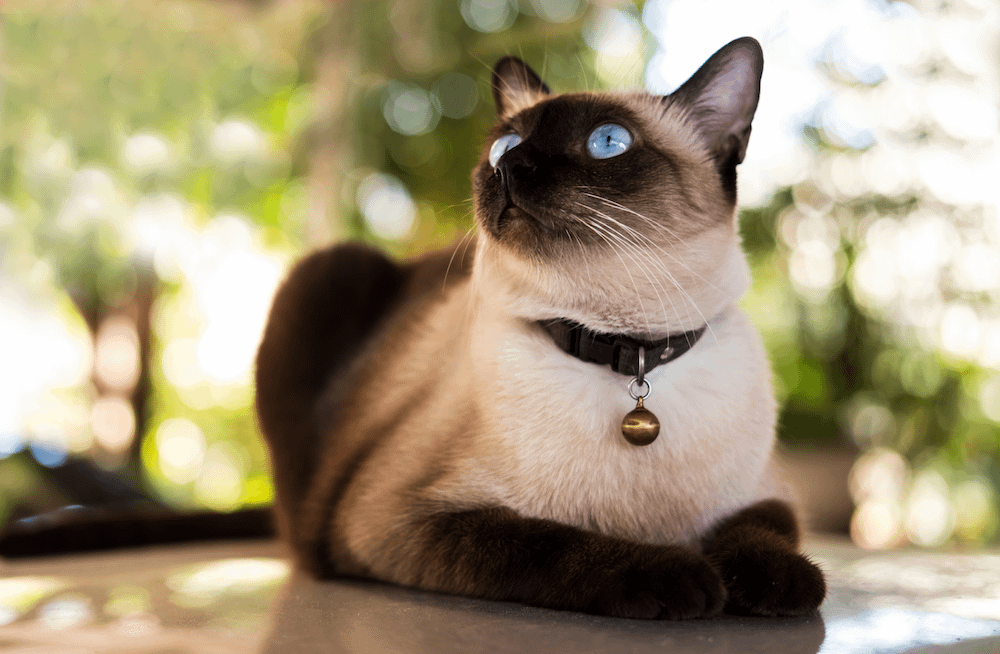
Giving your Siamese the best life
As already mentioned, the best life you can give your Siamese cat is one filled with, well, you! This breed requires a lot of attention, and will return any TLC received ten times over. Because they are energetic and needy, you’ll want to provide them with daily interactive exercise—preferably involving both you and a backup source, such as another pet or a child in the home, who can match this cat’s playfulness.
Although the Siamese cat’s favorite form of entertainment involves their family members, they’ll still enjoy amusing themselves from time to time with toys and environmental stimulation.
Interactive toys and furniture
Offer laser pointers, cat wands, ball toys, and catnip to spice up your Siamese kitty’s zoomies sessions. While you’re not home, toys like puzzle feeders can be a fun and stimulating distraction. So can cat furniture, which allows your cat to climb new heights, survey the world from above (or the world outside if next to a window), and scratch furniture you actually want them to scratch.
Proper nutrition
Because these cats are fairly active, maintaining a healthy weight shouldn’t be too difficult. They are typically very slender, and weight gain is quickly noticeable. If you are worried about obesity, try an automatic pet feeder that dispenses healthy portions several times a day.
Grooming needs met
One area where the Siamese cat isn’t high maintenance? Their grooming! This breed’s short, glossy coat is low-shedding with a fine texture. You’ll still want to brush your Siamese from time to time, particularly in the spring and summer. But don’t worry about intense grooming sessions and constantly sweeping up fur.
Make sure to trim your Siamese cat’s nails at least once a month and brush their teeth if they’ll let you. More likely, you’ll need to have your vet do dental cleanings—this is important, as the breed may be prone to dental issues.
Veterinarian check-ups
Regular veterinary check-ups are essential for maintaining your Siamese cat’s health. Make sure to take your cat to the vet annually before 10 years of age (or more, if your cat has certain medical conditions), and at least twice a year after that.
Because this breed is predisposed to certain medical conditions, being aware of any changes in physical health or behavior is paramount. With the help of app-connected, automatic pet appliances like a self-cleaning litter box or pet feeder, you can keep better track of your cat’s health habits and alert the vet as needed.
Welcoming a Siamese cat
Truly a star of the feline world, the Siamese cat is as affectionate and inviting a pet as you could ever ask for. If you are willing to meet their high demands for attention—and really, what’s so demanding about cuddling and playing with your cat throughout the day?—then you’re in for a long, amazing companionship.
